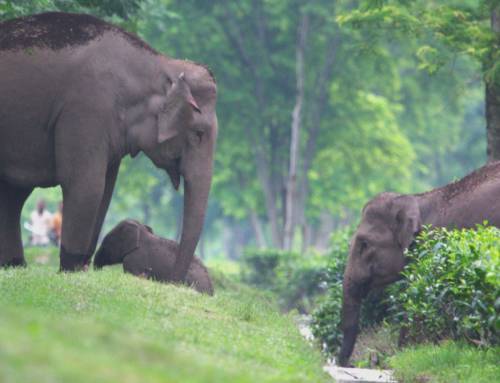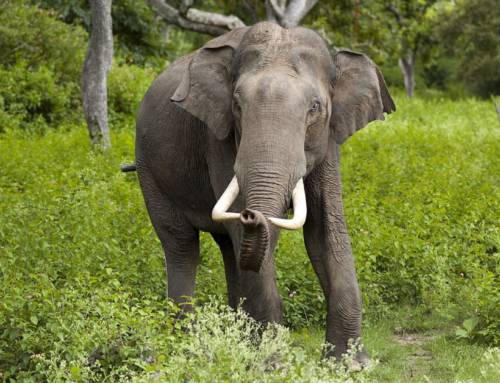Author: Saloni Basrur
This is the first article from our two-part series called “Classics”, describing some of the pioneering research done by CWS in its early years.
Lion-tailed macaques are shy, relatively small monkeys known for their pitch-black bodies and contrasting silver-white manes. These fruit-eating primates were once a common sight in the rainforests of Southern India. In the last century, however, they have steadily declined, causing scientists to declare them critically endangered. In 1985, Dr. Ullas Karanth discovered that Karnataka was home to many more lion-tailed macaques than previously estimated.
In Karnataka, lion-tailed macaques are locally known as Singalika which literally translates to “Lion-like”. Their distribution is confined to the tropical wet evergreen forests of the Western Ghats of India. Endemic to the States of Karnataka, Kerala, and Tamil Nadu, these arboreal mammals have evolved to occupy a specialised ecological niche.
“I had seen wild lion-tailed macaque in a few places in Karnataka during my forest hikes in the 1960s and 70’s. When I heard a talk by American Biologist Steven Green in 1977, mentioning that these macaques were virtually extinct in Karnataka’s Western Ghats, I was very surprised. I decided to do a detailed survey using questionnaire survey across potential habitats of the macaque.” – Dr. K. Ullas Karanth
In the 1980s, Dr. K. Ullas Karanth sought to establish the species’ population and habitat status in Karnataka. He surveyed 28 forest ranges in order to identify lion-tail macaque populations, assess the availability of potential habitat, and determine threats to the species and its environment.
“The key was to find those rare, hardy local informants who wandered extensively and could really distinguish the lion-tailed macaque from bonnet macaques, Hanuman langurs, and in southern Kodagu, even from Nilgiri langurs. I did find quite a few such informants and was able to determine lion-tailed macaques were more abundant in Karnataka than further south in the Western Ghats.” – Dr. K. Ullas Karanth
His research found severe habitat degradation due to factors such as human encroachment, conversion of forest land for agriculture, logging, and more. Although the lion-tailed macaque enjoys legal protection, poaching was found to be a significant threat, especially due to a regional belief in the aphrodisiacal and medicinal properties of ‘Black Monkey’ flesh. The study also found an estimated 1000 km2 of suitable habitat within Karnataka. Dr. Karanth estimated that a minimum population of about 200 troops or 3000 individuals was likely to be present within Karnataka.
This research brought to light the gross underestimates of earlier assessments of macaque distribution and population conducted within the state, displaying a reasonably well-distributed population structure across the viable habitat. Despite the positive outlook of the results, the species is definitely becoming scarcer across the state as the threats to their survival continue to amplify. The results from this study were used to develop a comprehensive management plan and the identification of key conservation areas within the state. Ultimately, the study led to the establishment of new protected areas in Kudremukh, Talakaveri, and extensions to Brahmagiri for the preservation of lion-tailed macaque habitat.
Since the publication of this paper, lion-tailed macaque populations have continued to plummet, with half of these troops disappearing due to the amplification of the very same pressures. Currently, their IUCN status is ‘Endangered’ and estimates show that less than 2,500 mature individuals remain in the wild.
Original Research Article: Ecological status of the lion-tailed macaque and its rainforest habitats in Karnataka, India – K. Ullas Karanth – Primate Conservation, 1985
You can access the original article here.
You can access the Kannada translation here.




